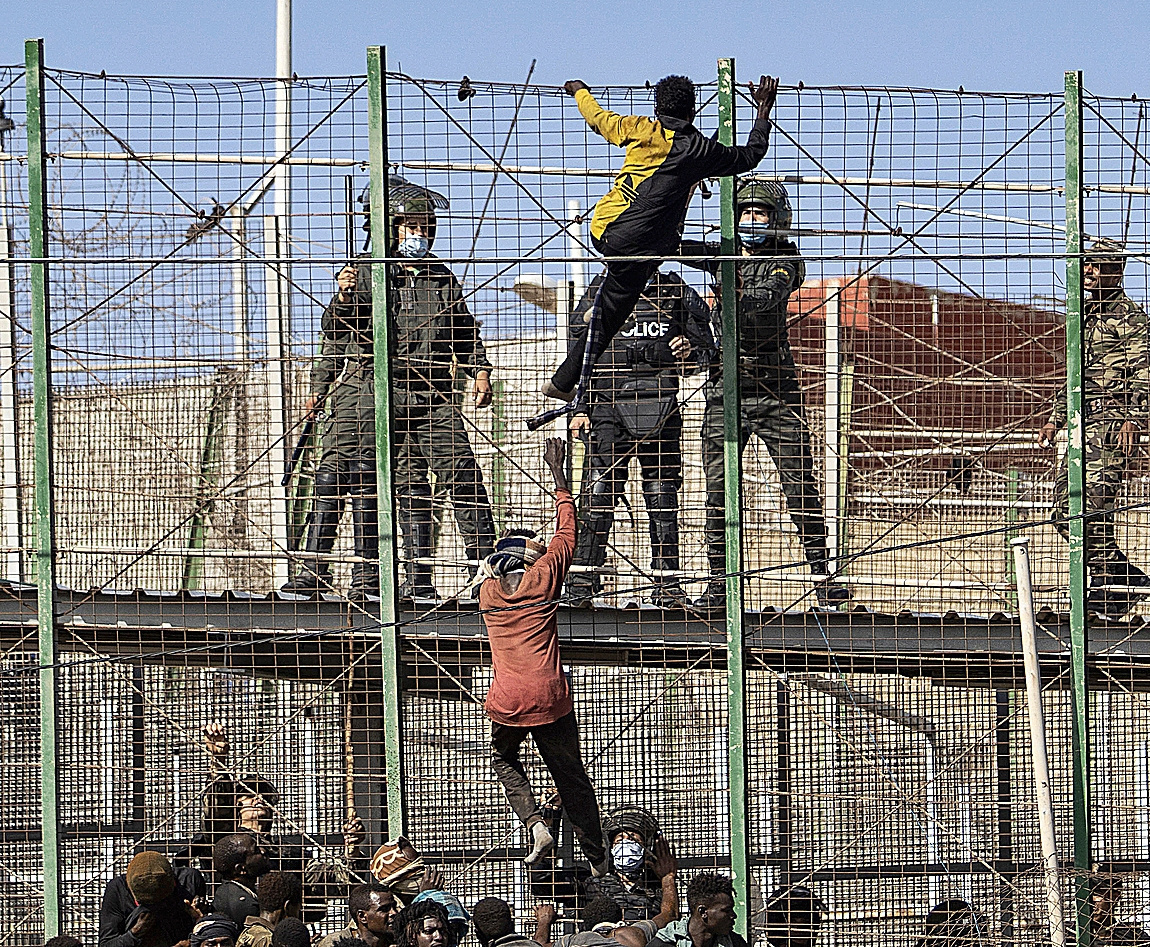The Ministry of the Interior has not fulfilled the commitment it made in March with Melilla after immigration shook Moncloa with the biggest blow to the table in the history of the border. The chain of jumps -six in four days, one of them the most massive since the infrastructure existed- and its magnitude, revealed the human and material shortcomings of the southern border of Europe and forced Fernando Grande-Marlaska to speed up a plan that , three months after that commitment, cannot even be described as embryonic. Neither the fence is sealed nor is the Civil Guard equipped with state-of-the-art riot gear.
This Friday, the border crossing again experienced an episode of extreme violence – this time at least 18 sub-Saharan migrants died on the Moroccan side and 49 Spanish agents were injured – and it was confirmed that nothing has changed.
The agents had to contain the crowd with the same riot gear as 30 years ago, despite the Ministry’s announcement after the border debacle, and with the usual number of troops: 16 when the avalanche began. The only thing that has differentiated this leap from that of three months ago is the new relations with Morocco after Pedro Sánchez bowed to Rabat’s position on the autonomy of the Sahara. The latter helped the Moroccan police to work hard this Friday to prevent the onslaught.
Of the 2,000 people who stampeded down from Mount Gurugú on Friday morning, 133 managed to enter Spain and are now in the Temporary Stay Center (CETI). The assault on the fence (which is 12 kilometers and six meters high) occurred in the weakest area, known as “el coladero”, since it is the only one that is unprotected because it lacks fencing. It is about 3.5 kilometers that comprise the segment established between Chinatown (where yesterday’s jump took place) and Beni-Enzar.
On March 9, the Interior promised to accelerate its plan to finish shielding the border perimeter (especially the part where there is no fence) and also to provide more means to the agents who guard it. He announced that he would provide this strip with inverted combs (a metal structure with semicircular bars crowning the fence), like the rest of the wall. These elements make jumping difficult.
The works are being carried out, true, but the works have not yet reached Chinatown and Beni Enzar. “Everything remains the same. There have been no changes. It is truly embarrassing”, denounce agents of the Civil Guard of the border. Agustín Leal, the communication secretary of the Jucil group of the Civil Guard, speaks along the same lines. “The Ministry has not taken the necessary means. He transferred his support but we continue in the same in terms of material and human resources. In addition, we do not have a corresponding legislation either because, it is becoming clear, today’s legislation causes the pull effect », he says. “Having happened what happened in March, the fence should have been fixed in a week, but it seems that they forget that we are the southern border.” Leal also rescues one of the historical claims of his group for Melilla: «Jucil has been warning for a long time that 200 agents are needed to protect the fence».
The new massive jump occurred first thing in the morning, after the migrants, according to Armed Institute sources consulted by this newspaper, had been threatening all week. More than 2,000 people had descended days before from Monte del Gurugú and had taken refuge in a forest near Nador to consummate their entry into Spain. The first approach to Melilla, the same sources specify, occurred at 6:40 a.m., at which time the Civil Guard Command’s anti-intrusion alarm was activated. Later, at around 8:40 am, more than 500 people managed to reach the access gate of the Chinatown border checkpoint and broke down the gate. At that time, there were 16 civil guards guarding the fence and, as happened in March, it turned into a pitched battle between those who wanted to enter Spain and the agents in charge of guarding the border. “It is necessary that the installation of the inverted combs be completed quickly, as well as that our colleagues from the Civil Guard who protect the fence receive the appropriate anti-riot material for the threat they face on a daily basis,” concluded Agustín Leal.
Conforms to The Trust Project criteria
















